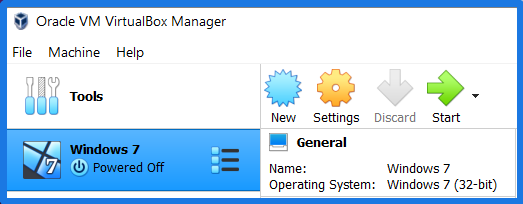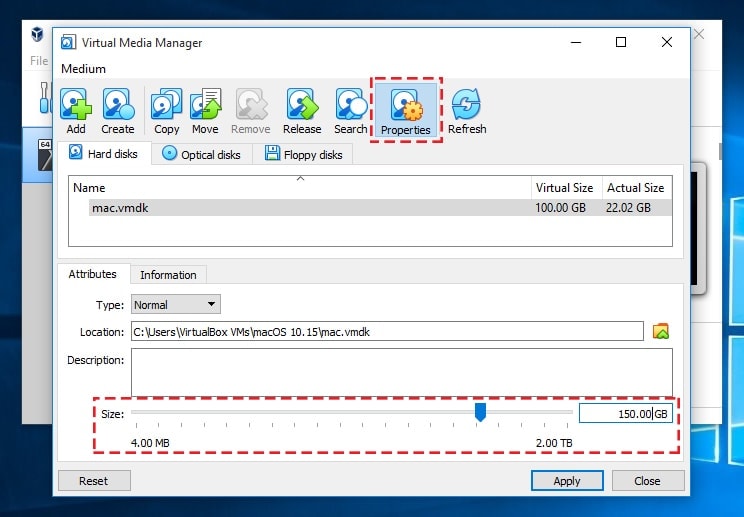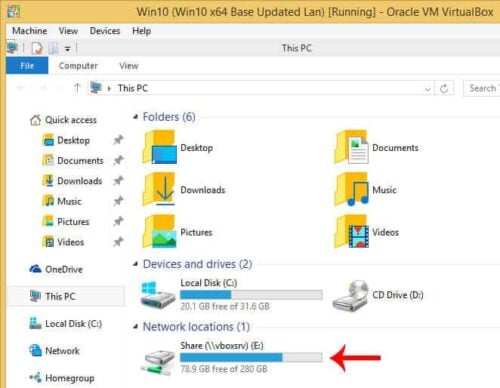

- #How to use virtualbox on the d drive how to#
- #How to use virtualbox on the d drive mac os#
- #How to use virtualbox on the d drive install#
- #How to use virtualbox on the d drive drivers#
Warning : The erase, format, and partitioning process will delete all data currently contained on the external drive.
#How to use virtualbox on the d drive install#
The external drive that you’ll install Windows on needs to be prepared by erasing and formatting the drive for use with Windows. Prepare the External Drive for Installing Windows If you’re not using a portable Mac with a built-in keyboard and trackpad, you’ll need a wired keyboard and mouse to complete the installation.
#How to use virtualbox on the d drive drivers#
During the Windows installation, the drivers for Apple wireless keyboards and mice aren’t installed until the very end of the process.

But the method we’re going to outline here is a bit different. They range from creating clones of an existing PC installation or using Microsoft IT tools for installing Windows.

There are actually a few ways you can successfully install Windows on an external drive. Installing Windows on an external drive would be a great solution to the problem of available space, but as we said, Boot Camp and Windows impose a restriction on installing to an external drive. While Boot Camp Assistant can partition your startup drive for you to make room for Windows, there are bound to be many of you who just don’t have room to spare on your startup drive to install Windows. One of the downsides to Boot Camp and the Windows installer is that it restricts you to only installing Windows on your Mac’s internal drive. It’s a nice capability that lets you select – at boot time – which operating system you wish to use: macOS or Windows.
#How to use virtualbox on the d drive how to#
The HOWTOs and tutorials section contains documentation submitted by users about how to do interesting things with VirtualBox.Boot Camp and Boot Camp Assistant allow you to install Windows on your Mac. The User FAQ provide common questions and answers not found in the user manual. Besides the user manual (see below), up-to-date information is available at " Status: Guest OSes".įor up-to-date details, especially on current operating system support and software requirements, please take a look at the current User Manual (online here).įrequently Asked Questions (FAQ) for end users For the latest VirtualBox version, see manual. Check the user manual of the VirtualBox version you are using which versions are supported.
#How to use virtualbox on the d drive mac os#
Presently, we support Windows, many Linux distributions, Mac OS X, Solaris and OpenSolaris. So, to install Windows 8, for example, you will need a file that will easily grow to several 10 GB in size. While VirtualBox itself is very lean (a typical installation will only need about 30 MB of hard disk space), the virtual machines will require fairly huge files on disk to represent their own hard disk storage. So you'll need that for the guest alone, plus the memory your operating system normally needs. Check the minimum RAM requirements of the guest operating system, they often will refuse to install if it is given less.

So, if you want to run Windows 8.1 on Windows 7, you probably won't enjoy the experience much with less than 2 GB of RAM. Basically, you will need whatever your host operating system needs to run comfortably, plus the amount that the guest operating system needs. Depending on what guest operating systems you want to run, you will need at least 512 MB of RAM (but probably more, and the more the better). Any recent Intel or AMD processor should do. In order to run VirtualBox on your machine, you need: This page is for end users who are looking for information about how to download and run VirtualBox.


 0 kommentar(er)
0 kommentar(er)
